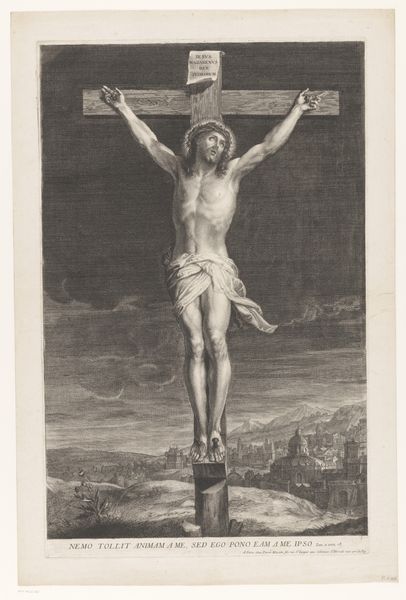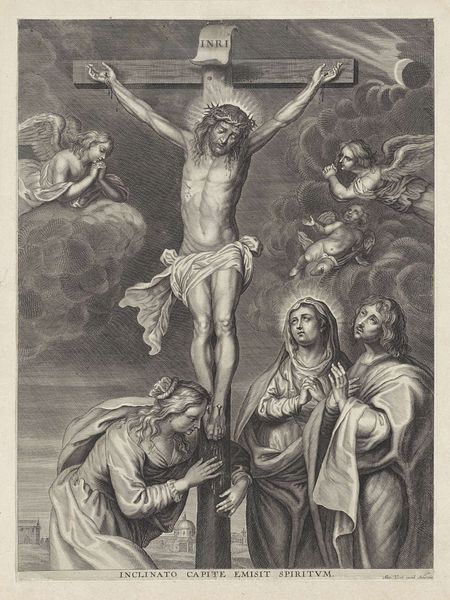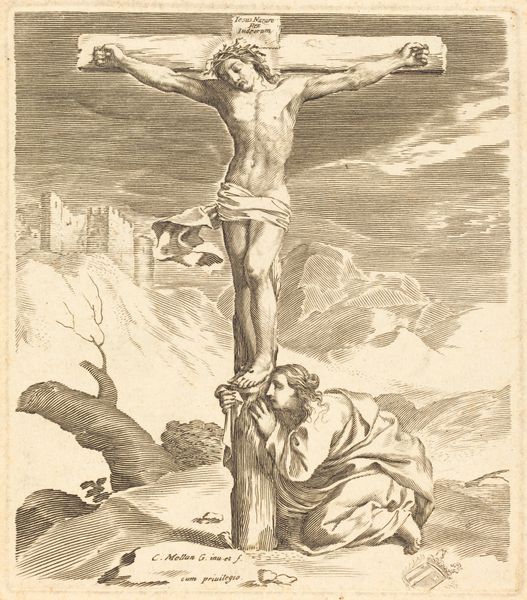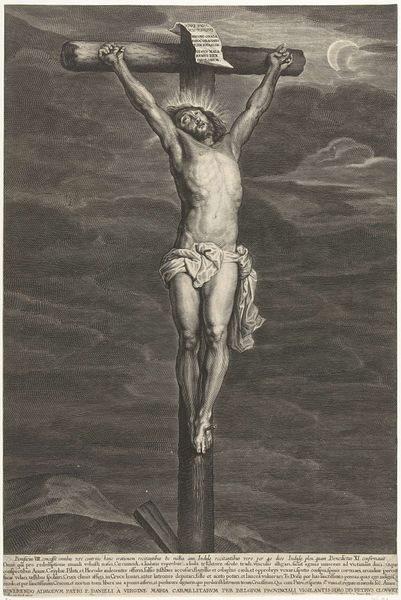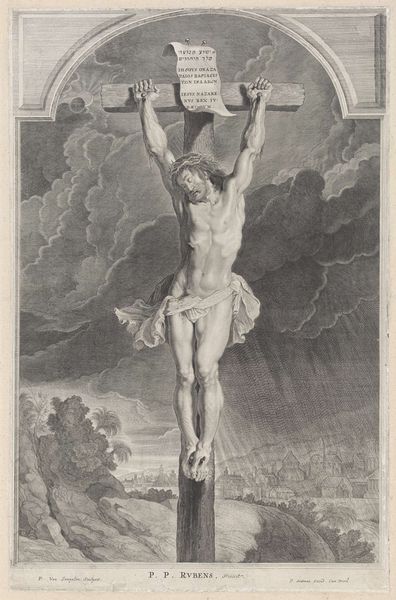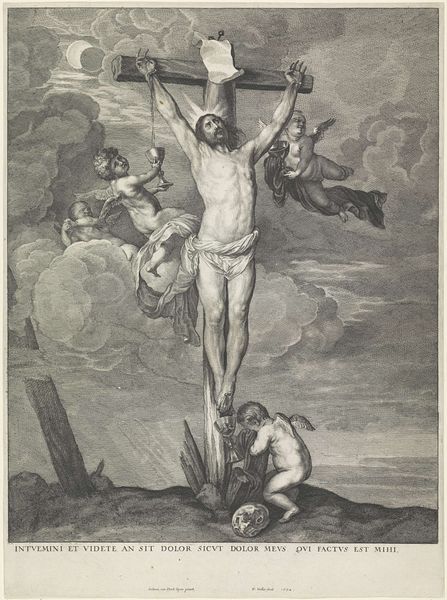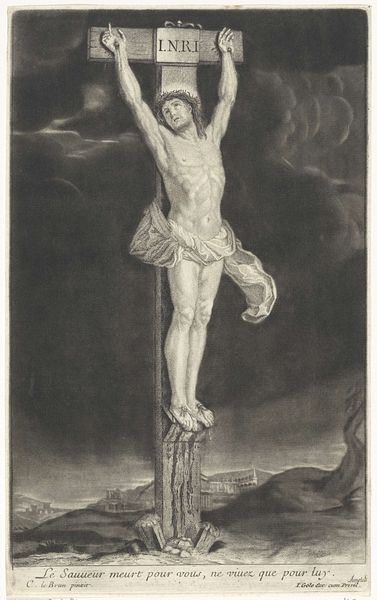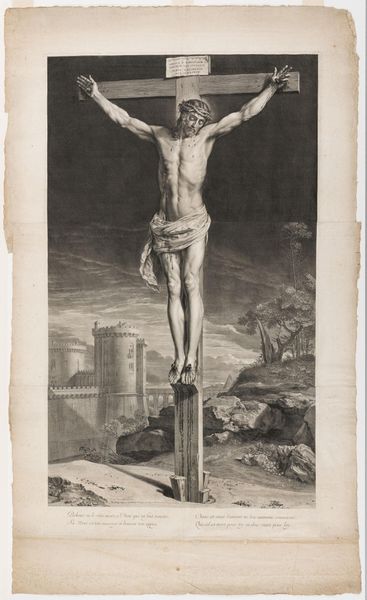
print, engraving
#
pencil drawn
#
baroque
# print
#
figuration
#
pencil drawing
#
history-painting
#
engraving
Dimensions: height 322 mm, width 225 mm
Copyright: Rijks Museum: Open Domain
Editor: This engraving, "Christus aan het kruis" by Louis Bernard Coclers from 1756, really grabs your attention. The fine lines create a scene of intense drama with lightning, a skull, and the city in the background. It feels chaotic, almost operatic. What strikes you when you look at this piece? Curator: The first thing that comes to mind is how Coclers has embedded so much symbolism. It is more than just a depiction of the crucifixion; it's a symbolic representation of sacrifice, redemption, and the power of faith. Notice the skull at the base of the cross? It represents Adam, signifying Christ's sacrifice as atonement for original sin. Editor: So the imagery is not only a historical representation but also loaded with deeper meaning. How does the cityscape relate? Curator: The cityscape, juxtaposed with the skull and the turbulent skies, introduces the concept of the 'heavenly city' versus earthly corruption. The storm might indicate divine anger, reflecting the upheaval of the natural order. Think of these elements not merely as background details, but as symbols laden with centuries of theological and philosophical contemplation. It draws upon collective cultural memory, doesn't it? Editor: That's interesting, and it definitely reframes how I view the work. I tend to focus on the technique, but the iconographic reading unlocks an entirely new layer of interpretation. Curator: Exactly. And consider that INRI inscription – Iesus Nazarenus Rex Iudaeorum. The sign, which has, over time, signified not condemnation, but rather triumph and recognition of Christ's kingship in the face of his apparent defeat. Symbolism enables continuity over generations; these images speak across centuries, if only we learn their language. Editor: Thanks, I’m starting to think differently now. The visual language feels almost like a kind of historical and emotional code. Curator: Precisely. Understanding these symbols allows us to decode the artist’s intended message and appreciate the enduring power of imagery to convey complex ideas and emotions.
Comments
No comments
Be the first to comment and join the conversation on the ultimate creative platform.
